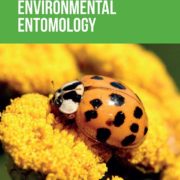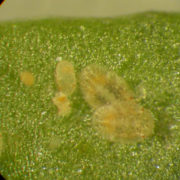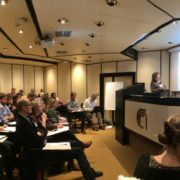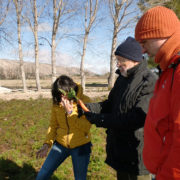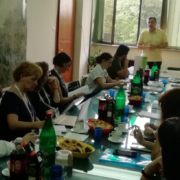“Candidatus Liberibacter solanacearum” associated with the Psyllid, Bactericera maculipennis (Hemiptera: Triozidae)
ORIGINAL ARTICLE
Karina M. Borges, W. Rodney Cooper, Stephen F. Garczynski, Jenita Thinakaran, Andy S. Jensen, David R. Horton, Joseph E. Munyaneza, Isabel Cueva, Nina M. Barcenas
Yakima Agricultural Research Laboratory, USDA, Agricultural Research Service, Wapato, WA 98951
ABSTRACT
The psyllid Bactericera maculipennis (Crawford) (Hemiptera: Triozidae) often cohabits field bindweed (Convolvulus arvensis, Solanales: Convolvulaceae) and other plants with the congeneric psyllid, Bactericera cockerelli (Šulc), in the Pacific Northwestern United States. Bactericera cockerelli is a vector of “Candidatus Liberibacter solanacearum,” the pathogen associated with zebra chip disease of potato (Solanales: Solanaceae).
Because B. maculipennis and B. cockerelli both naturally occur on certain plants, we surveyed B. maculipennis adults collected from Washington and Idaho for presence of “Ca. L. solanacearum” to determine whether this psyllid also harbors this pathogen. Liberibacter was present in 30% of field-collected B. maculipennis and in 100% of colony-reared psyllids. Sequences of 16S rDNA and microsatellite markers revealed that “Ca. L. solanacearum” from B. maculipennis was closely related to Liberibacter haplotype B from B. cockerelli. Results of laboratory assays demonstrated that Liberibacter can be transmitted between B. cockerelli and B. maculipennis on plants within the Convolvulaceae.
Potato plants challenged with Liberibacter-infected B. maculipennis did not become infected, apparently because potato is not a suitable host for the psyllid. We therefore conclude that B. maculipennis is not a direct threat to potato production, despite its association with Liberibacter. We are the first to report that “Ca. L. solanacearum” is associated with a psyllid other than B. cockerelli in North America. Results of our study demonstrate the importance of understanding the complete ecology of psyllids—including interactions with other psyllids on non-crop hosts—in predicting what crops or regions are potentially susceptible to the spread of Liberibacter.
Published on January 19, 2017 by ENVIRONMENTAL ENTOMOLOGY

